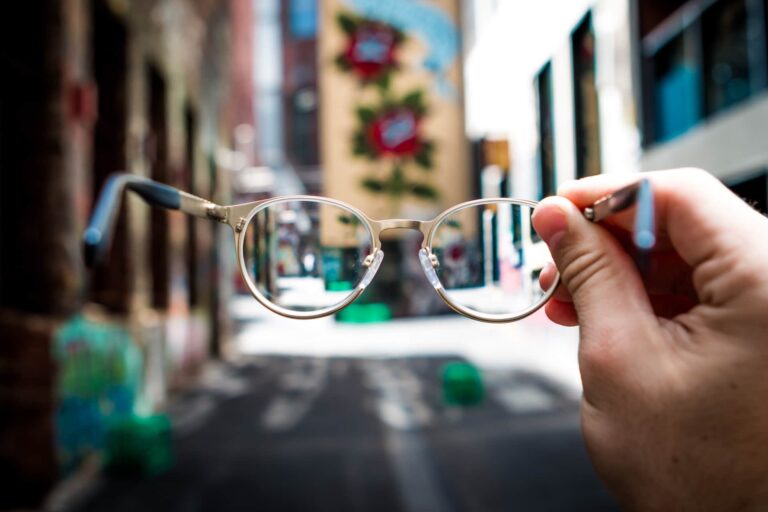
As demonstrated by the AR partnerships of Meta with EssilorLuxottica and Apple with Zeiss, the worlds of Augmented Reality (AR) and vision care are fundamentally intertwined. With eyewear in their first place, they both ultimately submit to the needs of our vision, appearance, and comfort. Un(?)surprisingly, this connection has revealed vision care to be a promising market entry point for display companies eager to co-create the AR world. Indeed, while AR is gaining exciting momentum—new AR glasses are hitting the market, and $ billions are being poured into R&D— today’s much larger traditional vision care industry is lagging behind, stuck in century-old practices, thus making this space ripe for innovation. Let’s see more.
The ‘century-old’ vision care industry
“Is this better or worse than before?
Hmm, I don’t know.
And now?
Maybe better, I am not sure.”
That dialogue may sound familiar to anyone who’s had their eyes tested. Doing so is no mean feat. Choosing what looks best between one lens and the other can result in a long, fastidious, and stressful interrogation, both for the patient and the eye care practitioners (ECP). Today’s vision tests use century-old procedures that rely on archaic technology. The patient looks at optotypes on the wall while the ECP patiently flips the different lenses on both eyes until the patient can decide on what seems to be the sharpest. While the process can be long, costly, and often unsatisfying for the patient, the bulky machinery also requires the ECP to have an experience-based gut feeling and a dedicated space.
Today, this process is a critical barrier between billions of people and billions of their glasses, and it will become an even greater obstacle for AR glasses in the near future unless it is minimized or eliminated.
Myopia is increasing, and so will demand for vision testing
With myopia on the rise globally, the flawed user experience of vision tests will affect an ever-growing number of people. Currently, more than two-thirds of the population in the US wear glasses or contacts, while myopia is constantly growing and is expected to affect 50 percent of the global population by 2050. The need for intuitive, accurate, effective, and cost-efficient vision diagnostics is, therefore, only to become even more crucial.
True 3D display for vision care is what the digital camera was for photography
As per many other technological evolutions, digitizing the vision test procedures opens far more possibilities, including a user-friendly experience. This is why CREAL, in partnership with ZEISS, started integrating its light field display technology into vision care instruments to enhance both the patient and ECP experience. CREAL’s light field display projects digital 3D imagery as a genuine representation of how light exists in the real world. By transforming the virtual images digitally, the display enables the simulation of any lens corrections, real or artificial. The digital procedure allows, for instance, the projection of different corrections next to each other simultaneously, significantly easing the selection process for the patient. With this approach, vision tests become faster, more enjoyable (animated, interactive vision tests like a game), tailored to the patient’s needs, and automated, improving the experience for the ECP too.
One technology to transform both sides of the coin
AR glasses with vision correction and consumers requiring vision tests before purchasing them are clear examples of the inevitable convergence between the consumer electronics and vision care industries. This intersection is already taking shape in partnerships between tech giants and optical industry leaders, highlighting how innovations in display technology could transform both markets. In response to this new landscape, CREAL, whose main mission is to bring natural and healthy vision to AR glasses, naturally decided to expand its display application to vision care, paving the way for more innovative and user-centered solutions on both fronts.
 Tomas Sluka is CEO and co-founder of CREAL.
Tomas Sluka is CEO and co-founder of CREAL.

